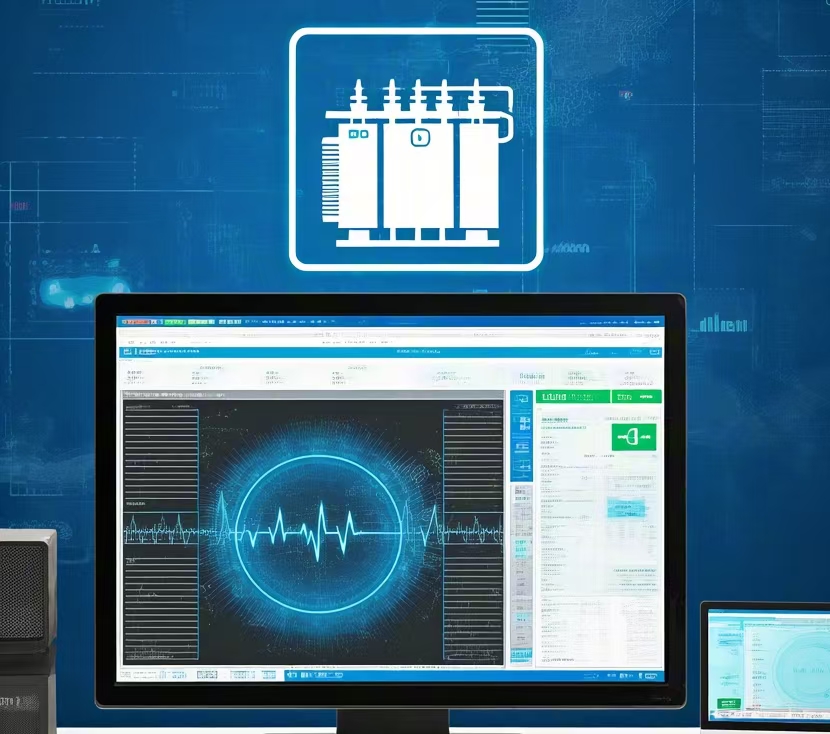As transformers are critical assets in electrical power systems, ensuring their reliability and early detection of potential faults is essential. Real-time monitoring systems have become an important tool for maintaining transformer health by providing continuous data on operational conditions such as temperature, moisture, gas emissions, and electrical performance. These smart systems allow utilities and industries to shift from reactive maintenance to predictive strategies, reducing downtime and extending equipment life. In this article, we will explore how real-time monitoring systems for transformers work, the technologies involved, and the benefits they bring to modern energy management.
What Is a Real-Time Monitoring System for Transformers?
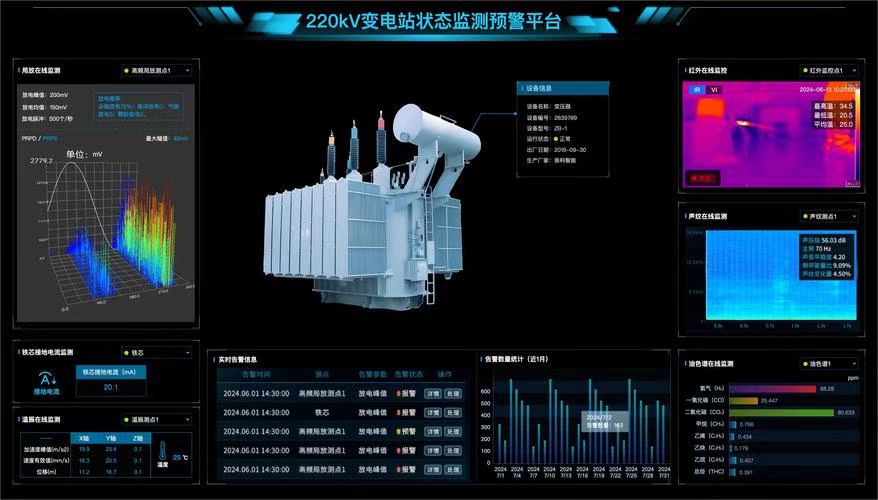
A real-time monitoring system for transformers is an advanced data acquisition and analysis platform that continuously observes critical operational parameters to ensure safe, efficient, and reliable performance. It collects, processes, and displays real-time information such as temperature, load, oil quality, partial discharge activity, and vibration levels, enabling operators to make data-driven decisions and prevent failures before they occur.
In this article, we will explore what a real-time monitoring system is, how it works, the key parameters it tracks, and why it is becoming essential in modern transformer management.
1. What Is a Real-Time Monitoring System for Transformers?
A real-time monitoring system consists of a network of sensors, data loggers, communication modules, and software platforms that constantly monitor transformer health indicators.
Core Components:
- Sensors: Measure temperature, pressure, gas levels, moisture content, current, and voltage.
- Data Acquisition Units: Collect and store sensor outputs.
- Communication Infrastructure: Transmits data wirelessly or via wired connections (fiber optics, Ethernet).
- Analytics and Visualization Software: Processes data into actionable insights, alerts, and visual dashboards.
- Control Room Interface: Provides operators with real-time system status and warnings.
Goal: To shift from reactive maintenance (after failures) to proactive and predictive maintenance, maximizing transformer lifespan and reducing downtime.
2. Key Parameters Monitored
| Parameter | Why It’s Important |
|---|---|
| Winding and Oil Temperatures | Prevent overheating and insulation damage. |
| Top-Oil and Hot-Spot Temperatures | Predict aging and failure risks accurately. |
| Load Current and Voltage | Monitor overloading or load imbalance. |
| Dissolved Gas Analysis (DGA) | Detect early signs of insulation degradation and arcing. |
| Moisture Content in Oil | Identify insulation weakening due to humidity. |
| Partial Discharge Activity | Detect localized dielectric breakdowns inside the transformer. |
| Bushing Condition Monitoring | Prevent bushing failures that can cause catastrophic events. |
| Cooling System Status | Ensure fans, pumps, and radiators are operating correctly. |
| Vibration and Noise Monitoring | Detect mechanical issues or core/coil displacement. |
Comprehensive monitoring allows detection of emerging problems long before they lead to catastrophic failures.
3. How Real-Time Monitoring Systems Work
Workflow Overview:
- Sensors installed on or inside the transformer measure physical quantities continuously.
- Data acquisition units collect sensor outputs and digitize them.
- Data transmission systems send real-time readings to local control centers or cloud-based servers.
- Analytics software processes the raw data, comparing it against threshold values, trends, and predictive models.
- Alerts and reports are generated if abnormal conditions are detected, enabling fast corrective action.
Some systems even integrate AI and machine learning to predict potential failure points based on historical and real-time data.
4. Benefits of Real-Time Transformer Monitoring
| Benefit | Impact |
|---|---|
| Early Fault Detection | Identify issues before major failures occur. |
| Increased Equipment Life | Avoid excessive thermal aging and mechanical wear. |
| Reduced Downtime | Minimize unscheduled outages through proactive maintenance. |
| Improved Load Management | Optimize transformer loading to prevent overloading. |
| Enhanced Safety | Detect hazardous conditions like internal arcing early. |
| Lower Maintenance Costs | Shift from scheduled maintenance to condition-based maintenance. |
| Regulatory and Standards Compliance | Meet operational safety and reporting standards. |
Real-time monitoring transforms transformer management from reactive to strategic, significantly improving operational resilience.
5. Integration with Digital Grids and Smart Systems
Modern real-time monitoring systems often feature:
- Cloud Integration: Remote access to transformer health data via secured cloud platforms.
- IoT Compatibility: Sensors communicating via IoT protocols (like MQTT, LTE-M, NB-IoT).
- SCADA System Integration: Data feeding directly into supervisory control and data acquisition (SCADA) systems.
- Predictive Analytics: AI-driven maintenance forecasts to optimize service scheduling and resource allocation.
These capabilities make real-time monitoring a central pillar of smart grids and digitally-enabled power systems.
6. Real-World Example: Impact of Monitoring
| Without Real-Time Monitoring | With Real-Time Monitoring |
|---|---|
| Transformer failure during overload, costly downtime. | Early detection of temperature rise and timely load balancing. |
| Oil deterioration unnoticed, leading to insulation failure. | DGA sensors detect dissolved gases early, enabling oil filtration before damage. |
| Bushing failure causing catastrophic event. | Bushing condition sensor triggers preemptive replacement. |
Proactive intervention driven by real-time insights saves millions in repair, replacement, and outage costs.
ClaimReview Fact Check
Real-time monitoring systems for transformers provide continuous insights into operating conditions, enabling predictive maintenance and early fault detection.True
Sensors and analytics platforms offer live monitoring of temperature, gas levels, load, and insulation health, preventing failures and optimizing transformer reliability.
What Key Parameters Are Monitored in Real Time?
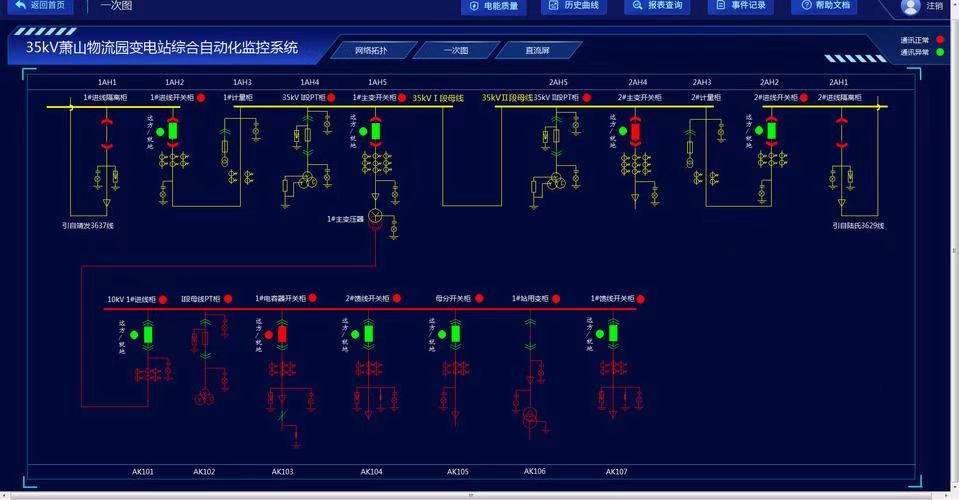
In a real-time transformer monitoring system, various critical parameters are constantly tracked to assess the transformer's operational health, performance, and safety. Monitoring these parameters allows operators to detect issues early, optimize load management, extend transformer life, and prevent costly failures. Without such real-time insights, transformers are exposed to hidden risks that could evolve into major outages or equipment losses.
In this article, we will systematically explore which key parameters are monitored in real time and why each one is crucial for transformer operation.
1. Winding Temperature
Description: Measures the temperature of the transformer windings directly or indirectly via temperature sensors or thermal models.
Why It’s Critical:
- Overheating leads to insulation aging and shortened transformer life.
- Helps in ensuring the transformer operates within the permissible thermal limits.
- Directly impacts load management and overload capacity.
Typical Sensors:
- RTDs (Resistance Temperature Detectors)
- Fiber-optic temperature probes.
2. Top-Oil and Bottom-Oil Temperature
Description: Measures the temperature of the insulating oil at the top (hottest point) and bottom (coolest point) of the tank.
Why It’s Critical:
- Indicates the overall thermal condition of the transformer.
- Monitors cooling system effectiveness.
- Essential for evaluating oil degradation risks.
Typical Sensors:
- Immersion oil thermometers
- Thermocouples.
3. Load Current and Voltage
Description: Real-time measurement of current flowing through each transformer winding and the voltage at input/output terminals.
Why It’s Critical:
- Ensures the transformer is operating within rated load limits.
- Identifies overloading, unbalanced loads, or short circuits.
- Supports load forecasting and energy management.
Typical Sensors:
- Current transformers (CTs)
- Voltage transformers (VTs).
4. Hot-Spot Temperature
Description: The highest localized temperature inside the transformer, often modeled from winding temperatures and load data.
Why It’s Critical:
- Hot-spot temperature is the single most important indicator of insulation aging.
- Directly linked to transformer lifetime expectations.
- Guides overload management decisions.
Typical Calculation:
- Derived using mathematical models from IEEE C57.91 or IEC 60076-7 standards.
5. Dissolved Gas Analysis (DGA)
Description: Measures the types and concentrations of gases dissolved in the insulating oil.
Why It’s Critical:
- Early detection of thermal faults, electrical discharges, and oil degradation.
- Identifies incipient failures like partial discharge, arcing, or overheating.
- Key technique for condition-based maintenance.
Typical Sensors:
- Online DGA monitors (e.g., for hydrogen, methane, ethylene, acetylene).
6. Moisture Content in Oil
Description: Measures the amount of water dissolved in the insulating oil.
Why It’s Critical:
- Excess moisture significantly reduces dielectric strength.
- Increases the risk of partial discharges and electrical breakdown.
- Accelerates insulation paper aging.
Typical Sensors:
- Inline moisture analyzers.
7. Partial Discharge (PD) Activity
Description: Detects low-energy discharges within the insulation system that precede major dielectric failures.
Why It’s Critical:
- Early warning of internal insulation defects.
- Helps in locating weak points before catastrophic failure.
- Reduces the need for invasive offline testing.
Typical Sensors:
- Acoustic emission sensors
- Ultra-high frequency (UHF) detectors.
8. Bushing Condition Monitoring
Description: Monitors voltage, current, and partial discharge at the bushings (the entry/exit points for conductors).
Why It’s Critical:
- Prevents bushing failures, which are among the top causes of catastrophic transformer failures.
- Ensures the integrity of high-voltage connections.
Typical Sensors:
- Capacitance and power factor monitors
- Leakage current monitors.
9. Cooling System Status
Description: Real-time status of fans, oil pumps, and heat exchangers.
Why It’s Critical:
- Cooling system failures can lead to rapid overheating.
- Enables automatic activation of backup cooling resources.
- Critical for high-load or forced-cooled transformers.
Typical Sensors:
- Fan and pump motor monitors
- Flow sensors for oil and air.
10. Vibration and Acoustic Monitoring
Description: Measures vibration and noise levels from the transformer core and windings.
Why It’s Critical:
- Abnormal vibrations indicate loose components, core problems, or mechanical deformation.
- Early detection prevents structural failures and reduces maintenance costs.
Typical Sensors:
- Accelerometers
- Acoustic emission detectors.
11. Environmental and Ambient Parameters
Description: Records external temperature, humidity, pressure, and weather conditions.
Why It’s Critical:
- Ambient conditions affect cooling efficiency and oil properties.
- Helps in temperature correction for load capacity evaluations.
Typical Sensors:
- Weather stations
- Ambient temperature and humidity sensors.
ClaimReview Fact Check
Real-time monitoring of parameters such as temperature, dissolved gas content, partial discharges, load, and cooling system status is essential for ensuring transformer safety and reliability.True
Monitoring these critical parameters enables early fault detection, optimizes load handling, and extends transformer operational life.
Summary Table: Key Real-Time Monitoring Parameters
| Parameter | Primary Purpose |
|---|---|
| Winding and Oil Temperatures | Overheating prevention and load management. |
| Load Current and Voltage | Overload and imbalance detection. |
| Dissolved Gas Levels (DGA) | Early fault detection through gas analysis. |
| Moisture in Oil | Insulation health and dielectric strength check. |
| Partial Discharges | Insulation defect identification. |
| Bushing Health | High-voltage entry-point monitoring. |
| Cooling System Performance | Ensuring efficient thermal management. |
| Vibration Monitoring | Detecting mechanical problems early. |
| Ambient Conditions | Adjusting operational parameters appropriately. |
How Do Sensors and Communication Technologies Work Together?
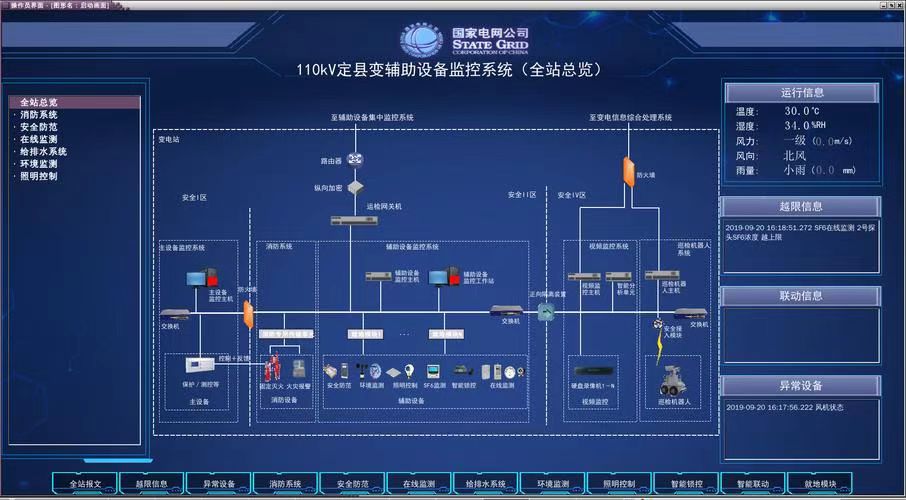
In real-time transformer monitoring systems, sensors and communication technologies work seamlessly together to provide a live stream of operational data. Sensors collect vital measurements such as temperature, gas levels, load currents, and partial discharges, while communication technologies ensure that this information is transmitted reliably and securely to control rooms or cloud-based platforms. This integration enables operators to make proactive decisions, prevent failures, and optimize maintenance strategies.
In this article, we will explain how sensors and communication technologies collaborate, highlighting their individual roles and how they synchronize to create an intelligent, responsive transformer monitoring ecosystem.
1. Role of Sensors in Transformer Monitoring
Sensors are the data collection points. They detect specific physical, chemical, or electrical parameters related to the transformer's health and performance.
Common Types of Sensors:
| Sensor Type | Measured Parameter |
|---|---|
| Temperature Sensors (RTDs, thermocouples) | Winding and oil temperatures |
| Gas Sensors (DGA analyzers) | Dissolved gases in oil |
| Moisture Sensors | Water content in insulating oil |
| Current and Voltage Sensors | Load currents and voltages |
| Acoustic Sensors | Partial discharge activity |
| Vibration Sensors | Mechanical movement and anomalies |
| Cooling System Sensors | Fan/pump operation status, oil flow |
How Sensors Work:
- Capture real-time measurements.
- Convert physical signals (heat, gas concentration, moisture) into electrical signals.
- Output standardized signals (analog 4-20mA, digital MODBUS, Ethernet, etc.) for further transmission.
2. Role of Communication Technologies
Communication technologies handle the transport of sensor data from the transformer to monitoring systems (local or remote).
Types of Communication Systems:
| Technology | Description |
|---|---|
| Wired Ethernet | High-speed, reliable data transfer via cables. |
| Fiber Optic Links | Immune to electromagnetic interference, used for long distances and high-voltage environments. |
| Wireless (Wi-Fi, Zigbee, 4G/5G, LoRaWAN) | Enables flexible deployment and remote site monitoring. |
| SCADA Systems | Supervisory control and data acquisition networks designed for industrial environments. |
| IoT Platforms | Internet of Things protocols (MQTT, CoAP) for smart grid integration and cloud-based analytics. |
Communication Devices:
- Gateways
- Data loggers
- Protocol converters
- Cloud servers
3. How Sensors and Communication Work Together: Data Flow
Step-by-Step Interaction:
-
Sensing:
- Sensors installed on the transformer continuously measure physical parameters.
-
Signal Conversion:
- The sensor output (analog or digital) is converted into a standardized data packet.
-
Data Collection:
- Local data loggers or intelligent electronic devices (IEDs) aggregate data from multiple sensors.
-
Data Transmission:
- Data is transmitted via wired or wireless networks to local SCADA systems or remote cloud servers.
-
Data Processing and Visualization:
- Analytics platforms process incoming data.
- Dashboards, graphs, alerts, and reports are generated for operators.
-
Action and Response:
- Automated or manual responses can be initiated based on data insights (e.g., activating additional cooling, adjusting load).
This synchronized data flow transforms raw sensor readings into actionable intelligence for transformer operators.
4. Technologies Used to Secure and Enhance Communication
Modern communication in transformer monitoring emphasizes:
- Encryption and cybersecurity to protect data integrity and prevent hacking.
- Redundant communication paths (e.g., dual Ethernet ports) to ensure reliability.
- Edge computing where basic data processing happens at the sensor or local level before transmission to reduce latency.
- Event-driven transmission where critical alarms are sent immediately rather than waiting for scheduled polling.
These innovations ensure that sensor data remains accurate, secure, and timely.
5. Practical Example: Working System
| Component | Function |
|---|---|
| Fiber-Optic RTD in Winding | Measures winding temperature in real-time. |
| Online DGA Monitor | Continuously samples oil for dissolved gases. |
| Moisture Sensor in Oil Circuit | Detects water contamination in insulating oil. |
| Wireless Gateway | Transmits collected data to a central SCADA. |
| SCADA/Cloud Dashboard | Displays real-time conditions, generates alerts, and stores historical trends. |
This setup ensures that every operational aspect of the transformer is measured, transmitted, and analyzed without delay.
ClaimReview Fact Check
In real-time transformer monitoring systems, sensors collect operational data which is transmitted by communication technologies to analysis and control platforms.True
Sensors detect critical conditions like temperature, gas presence, or vibration, and communication networks securely transport this information for real-time monitoring and decision-making.
6. Summary Table: Sensor and Communication Coordination
| Step | Role |
|---|---|
| Sensor Measurement | Captures real-time physical or electrical data. |
| Signal Processing | Converts sensor output into usable data formats. |
| Data Transmission | Sends data via wired or wireless technologies. |
| Central Processing | Analyzes data for visualization and decision support. |
| Operator Response | Enables proactive action based on live insights. |
What Role Does Data Analysis Play in Transformer Monitoring?
In transformer monitoring, data analysis plays the central role of transforming raw sensor inputs into meaningful, actionable insights. While sensors continuously collect real-time information (such as temperature, load, dissolved gases, or vibration), it is data analysis that detects anomalies, predicts failures, optimizes performance, and enables proactive maintenance. Without robust data analysis, even the most advanced monitoring systems would merely accumulate unstructured information, offering little practical value to operators.
In this article, we will explore in depth what role data analysis plays in transformer monitoring, highlighting its types, benefits, methods, and critical importance for building intelligent, resilient transformer management systems.
1. Converting Raw Data into Actionable Insights
What Happens:
- Sensors collect enormous volumes of real-time data: temperatures, currents, dissolved gases, etc.
- Data analysis processes, cleans, and organizes this data into formats that are understandable and usable.
Why It’s Crucial:
- Helps identify patterns that raw data alone cannot reveal.
- Transforms millions of data points into health indicators, performance scores, and risk assessments.
- Supports intelligent decision-making about transformer operations and maintenance.
Without analysis, operators would be overwhelmed by meaningless data streams.
2. Early Fault Detection and Diagnosis
Through continuous analysis, the monitoring system can detect early warning signs such as:
| Monitored Condition | Possible Fault Detected |
|---|---|
| Rapid temperature rise | Cooling failure or winding overload |
| Abnormal gas formation (via DGA) | Insulation degradation, arcing |
| Increased moisture content | Oil contamination, seal breach |
| High vibration levels | Core movement, winding looseness |
| Partial discharge activity | Localized dielectric failure |
Data analysis identifies abnormal trends and triggers alerts or alarms, enabling maintenance teams to intervene before catastrophic failure occurs.
3. Predictive Maintenance and Life Expectancy Estimation
Predictive analytics uses real-time and historical data to forecast:
- When components are likely to fail.
- How much insulation life remains based on thermal modeling (especially hot-spot temperature analysis).
- Optimal timing for maintenance rather than relying on fixed schedules.
Benefits:
- Maximizes transformer availability.
- Reduces unplanned outages.
- Optimizes resource allocation by servicing transformers only when needed.
Modern systems employ machine learning algorithms that become more accurate over time as more operational data is collected.
4. Load Management and Operational Optimization
By analyzing load patterns over time, data analysis:
- Identifies overloading trends that might otherwise be unnoticed.
- Helps in balancing loads across transformers.
- Advises when to de-rate transformers temporarily during extreme ambient conditions.
- Supports network planning for future capacity upgrades.
This dynamic load management improves energy efficiency and extends transformer life.
5. Cooling System Efficiency Monitoring
Data analysis also monitors cooling system performance by:
- Tracking fan and pump operation patterns.
- Evaluating cooling start-stop cycles against temperature profiles.
- Detecting cooling failures or inefficiencies early.
Result: Improved cooling reliability, better transformer thermal regulation, and longer insulation lifespan.
6. Event Correlation and Root Cause Analysis
When a transformer incident occurs (e.g., temperature alarm, bushing failure), data analysis:
- Correlates multiple events (e.g., temperature spikes, sudden load surges, gas generation).
- Helps identify root causes rather than just symptoms.
- Supports faster troubleshooting and better failure prevention strategies in the future.
Sophisticated systems even use event replay tools to visualize how conditions evolved leading up to a fault.
7. Regulatory Compliance and Reporting
Data analysis automates the generation of:
- Compliance reports for utility regulators.
- Maintenance logs for insurance purposes.
- Health summaries for internal audits.
Thus, it ensures that transformer operations stay within legal and safety frameworks without adding administrative burdens.
ClaimReview Fact Check
Data analysis in transformer monitoring systems turns raw sensor data into actionable insights, enabling fault detection, predictive maintenance, operational optimization, and compliance reporting.True
Data analysis transforms large volumes of collected data into health assessments, risk predictions, and maintenance strategies, ensuring reliable and safe transformer operation.
Summary Table: Role of Data Analysis
| Role | Impact |
|---|---|
| Raw Data Processing | Converts sensor inputs into usable formats |
| Early Fault Detection | Alerts operators to emerging issues |
| Predictive Maintenance | Forecasts failures and schedules maintenance efficiently |
| Load and Cooling Optimization | Balances loads, improves energy efficiency |
| Root Cause Analysis | Correlates multiple events to diagnose failures |
| Regulatory Reporting | Automates compliance and documentation |
What Are the Benefits of Using Real-Time Monitoring Systems?
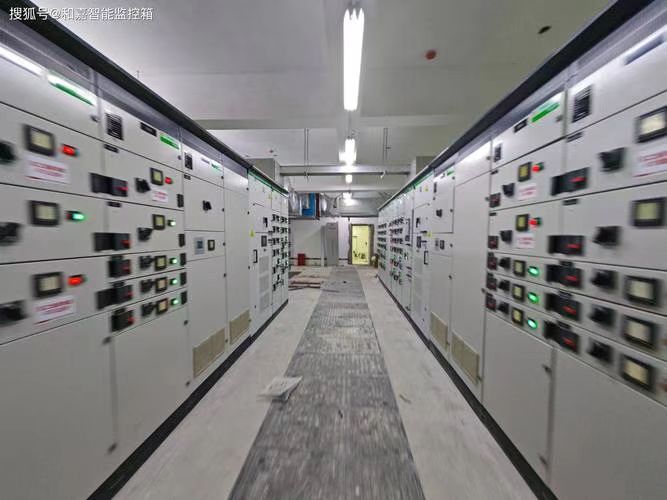
Real-time monitoring systems have become an essential asset for the safe, efficient, and reliable operation of modern transformers. Instead of relying on periodic manual inspections or scheduled maintenance, real-time monitoring enables continuous observation of critical parameters, providing instant insights into a transformer's health. This allows for early intervention, smarter maintenance planning, and optimized operational performance.
In this article, we will detail the key benefits of using real-time monitoring systems for transformers and explain how they help improve system performance and reduce operational risks.
1. Early Fault Detection and Prevention
Real-time monitoring systems detect anomalies at the earliest stages—often long before they escalate into critical failures.
Examples of Early Warnings:
- Sudden temperature rises → Possible cooling failure.
- Abnormal dissolved gas patterns → Early signs of internal arcing.
- Unusual vibration → Indication of mechanical loosening or core displacement.
Benefit:
- Prevents costly catastrophic failures.
- Reduces unplanned downtime.
- Minimizes emergency repairs.
Operators can take proactive corrective actions instead of reacting to unexpected breakdowns.
2. Extended Transformer Lifespan
Real-time monitoring maintains transformers within safe operational limits:
- Controls thermal stress by ensuring temperatures remain within permissible thresholds.
- Reduces insulation degradation by maintaining oil and winding health.
- Detects overload conditions early, allowing load adjustments.
Benefit:
- Extends insulation and mechanical component life.
- Delays capital expenditure for transformer replacements.
- Improves return on investment over the transformer's lifecycle.
3. Predictive and Condition-Based Maintenance
Traditional maintenance schedules are based on fixed intervals, whether needed or not. Real-time monitoring enables maintenance based on actual transformer condition.
How It Works:
- Predicts when maintenance is needed based on real-time data trends (temperature, DGA results, moisture levels, etc.).
- Reduces unnecessary inspections and service costs.
Benefit:
- Reduces maintenance costs by up to 30–40%.
- Minimizes operational disruptions.
- Optimizes resource allocation for maintenance teams.
4. Improved Operational Efficiency and Load Management
By analyzing load profiles and temperature behaviors in real time, operators can:
- Optimize transformer loading without exceeding thermal limits.
- Balance loads across multiple transformers to avoid localized overloading.
- Adapt operation strategies to real-time grid conditions.
Benefit:
- Maximizes transformer capacity utilization.
- Increases overall grid efficiency.
- Improves power quality and stability.
5. Enhanced Safety
Real-time monitoring systems can detect:
- Risky conditions like gas accumulation, partial discharge, or bushing deterioration.
- Cooling system malfunctions that can lead to fires or explosions.
Benefit:
- Improves worker and public safety.
- Reduces fire and environmental hazards.
- Ensures compliance with safety regulations and standards.
6. Faster Fault Response and Recovery
In case of detected issues:
- Automated alerts (email, SMS, alarms) are sent instantly to maintenance teams.
- Diagnostic data is immediately available for troubleshooting.
Benefit:
- Reduces mean time to repair (MTTR).
- Improves service continuity for critical loads like hospitals, data centers, and industries.
- Minimizes customer impact in utility operations.
7. Better Asset Management and Decision Support
Historical data, trend reports, and health indices generated by real-time monitoring systems support:
- Long-term planning for transformer replacement or refurbishment.
- Risk-based prioritization of maintenance activities.
- Strategic investment decisions based on real operational performance.
Benefit:
- Optimizes asset lifecycle management.
- Supports budget planning and risk mitigation strategies.
8. Regulatory Compliance and Reporting
Utilities and industries are increasingly required to demonstrate:
- Transformer health management practices.
- Event records and maintenance logs.
- Safety and environmental risk controls.
Real-time systems automate data collection and generate compliant reports.
Benefit:
- Ensures regulatory compliance.
- Simplifies audits and insurance claims.
- Reduces legal risks associated with equipment failures.
ClaimReview Fact Check
Real-time monitoring systems for transformers enhance reliability, extend asset life, enable predictive maintenance, improve safety, and optimize operational efficiency.True
By continuously monitoring critical parameters and analyzing trends, real-time systems detect problems early, optimize maintenance, improve load management, and increase overall system resilience.
Summary Table: Benefits of Real-Time Monitoring
| Benefit | Impact |
|---|---|
| Early Fault Detection | Prevents catastrophic failures and unplanned downtime |
| Extended Transformer Life | Reduces aging and extends service years |
| Predictive Maintenance | Cuts unnecessary costs and improves scheduling |
| Operational Efficiency Improvement | Optimizes load handling and cooling performance |
| Enhanced Safety | Detects hazardous conditions early |
| Faster Fault Response | Reduces repair times and service interruptions |
| Better Asset Management | Informs strategic maintenance and investment plans |
| Regulatory Compliance | Simplifies reporting and audit processes |
How Are Real-Time Monitoring Systems Integrated into Existing Power Systems?

Integrating real-time monitoring systems into existing power infrastructures is a vital step toward making legacy grids smarter, safer, and more efficient. These systems enhance traditional transformer operation by embedding advanced sensing, communication, and analytics layers without the need for complete equipment replacement. Proper integration ensures that utilities and industries can gain real-time insights into transformer health, allowing for predictive maintenance, optimized performance, and risk mitigation.
In this article, we will explore how real-time monitoring systems are integrated into existing power systems, including planning, technical requirements, and best practices for successful deployment.
1. Assessment of Existing Transformer Infrastructure
Before integration, a detailed site assessment is conducted to evaluate:
| Assessment Focus | Key Considerations |
|---|---|
| Transformer Age and Type | Oil-immersed vs dry-type, cooling system types |
| Available Sensor Access Points | Bushings, tank walls, cooling pipes, terminal boxes |
| Load and Operating Conditions | Typical loads, overload histories, environmental factors |
| Existing Communication Infrastructure | Availability of Ethernet, SCADA, or wireless networks |
Goal: Identify what additional sensors and communication interfaces are needed without major modifications.
2. Sensor Installation and Retrofitting
New sensors are retrofitted onto the transformer at strategic locations:
| Sensor Type | Installation Location |
|---|---|
| Winding Hot-Spot Sensors | Inside winding structures or using fiber optics |
| Oil Temperature Sensors | Top and bottom of the oil tank |
| Dissolved Gas Analyzers (Online DGA) | Connected to oil sampling valves or circulating oil lines |
| Moisture Sensors | Installed in oil pipes or tank wall probes |
| Vibration and Acoustic Sensors | Attached externally to the core and tank surfaces |
| Load Current and Voltage Sensors | Integrated into bushing connections or secondary circuits |
Important: Most modern sensors are non-intrusive, requiring minimal downtime and ensuring transformer integrity during installation.
3. Communication System Setup
Once sensors are installed, data acquisition units and communication gateways are added to enable data transmission.
| Technology | Application |
|---|---|
| Wired Ethernet | For substations with existing local area networks (LANs). |
| Fiber Optic Cables | For EMI-immune, long-distance, high-speed data transfer. |
| Wireless Systems (Wi-Fi, LoRaWAN, LTE) | For remote sites without extensive wired infrastructure. |
Gateways aggregate sensor data and transmit it to control centers, SCADA systems, or cloud-based platforms.
4. Integration with SCADA and Control Systems
Real-time monitoring platforms are often integrated into existing SCADA (Supervisory Control and Data Acquisition) systems:
- Use of standard protocols such as MODBUS, DNP3, IEC 61850 for seamless communication.
- Real-time transformer health parameters are displayed alongside traditional SCADA data like breaker status and voltage levels.
- Alarm management systems configured for event-driven alerts (e.g., if hot-spot temperature exceeds 110°C).
Result: Operators receive a unified view of electrical system performance and transformer health from a single interface.
5. Cloud Integration for Remote Monitoring and Analytics
Modern integrations increasingly use cloud platforms:
| Feature | Benefit |
|---|---|
| Cloud Storage and Processing | Handles large volumes of monitoring data efficiently. |
| Web Dashboards and Mobile Access | Allows viewing transformer health from any location. |
| AI-Based Analytics | Supports predictive maintenance and risk forecasting. |
| API Interfaces | Enables integration with enterprise asset management (EAM) systems. |
Cloud solutions offer scalability, advanced analytics, and cost-effectiveness for utilities with widespread transformer fleets.
6. System Commissioning and Testing
Once installed:
- Conduct full system testing for data accuracy, sensor calibration, communication reliability, and dashboard functionality.
- Perform alarm simulation to verify that thresholds and notifications work correctly.
- Validate historical data logging to ensure compliance with regulatory and operational requirements.
Training sessions for maintenance staff and control room operators are essential to familiarize teams with new systems.
ClaimReview Fact Check
Real-time monitoring systems are integrated into existing power systems by retrofitting sensors, installing communication devices, linking with SCADA platforms, and enabling cloud-based analytics.True
Integration involves installing monitoring hardware without replacing transformers, ensuring seamless data collection, communication, and real-time operational insights.
7. Summary Table: Steps for Integration
| Step | Action |
|---|---|
| Infrastructure Assessment | Evaluate transformer conditions and communication readiness. |
| Sensor Installation | Install temperature, gas, moisture, and load sensors. |
| Communication Network Setup | Deploy wired or wireless transmission systems. |
| SCADA/Control System Integration | Connect to existing control and monitoring platforms. |
| Cloud Analytics Enablement | Optional for advanced diagnostics and remote monitoring. |
| Commissioning and Training | Test system functionality and educate operational teams. |
Conclusion
Real-time monitoring systems represent a significant advancement in transformer management, providing continuous insights that enable smarter maintenance decisions and proactive fault prevention. By tracking key operational parameters and using advanced data analytics, operators can identify potential problems early, optimize maintenance schedules, and ultimately enhance system reliability and efficiency. As digitalization in the power sector grows, real-time monitoring will become an essential part of transformer asset management, supporting a more resilient and sustainable energy infrastructure.
FAQ
Q1: What is a real-time monitoring system for transformers?
A1: A real-time monitoring system for transformers is a smart technology that continuously collects and analyzes data from transformers during operation. It provides instant insights into transformer health, enabling early detection of faults, optimization of performance, and predictive maintenance.
Q2: How does a real-time transformer monitoring system work?
A2: Real-time monitoring systems use sensors installed on transformers to collect data on parameters such as temperature, oil quality, moisture content, load, voltage, partial discharges, and vibrations. This data is transmitted to a central platform where it is analyzed, and alerts are generated if abnormal conditions are detected.
Q3: What key parameters are tracked by real-time transformer monitoring systems?
A3: Key parameters include winding and oil temperatures, dissolved gases (DGA), insulation resistance, load currents, voltages, oil moisture levels, vibration signatures, and cooling system efficiency. Monitoring these indicators helps identify potential risks before they cause major failures.
Q4: What technologies enable real-time monitoring of transformers?
A4: Technologies include IoT-based smart sensors, wireless data transmission (e.g., Wi-Fi, 4G/5G), cloud-based data analytics platforms, machine learning algorithms for predictive analytics, and SCADA systems for centralized supervision and control.
Q5: What are the benefits of real-time transformer monitoring?
A5: Benefits include early fault detection, reduced downtime, improved operational reliability, extended transformer lifespan, better load management, and optimized maintenance schedules. Real-time monitoring ultimately reduces repair costs and prevents catastrophic transformer failures.
References
"How Real-Time Monitoring Enhances Transformer Reliability" - https://www.transformertech.com/real-time-monitoring-transformers - Transformer Tech
"Understanding Online Transformer Monitoring Systems" - https://www.powermag.com/real-time-transformer-monitoring - Power Magazine
"Real-Time Monitoring in Smart Grids: Transformer Applications" - https://www.electrical4u.com/transformer-real-time-monitoring - Electrical4U
"Transformer Condition Monitoring Using Real-Time Data" - https://www.researchgate.net/transformer-real-time-monitoring - ResearchGate
"Technologies Behind Smart Transformer Monitoring Systems" - https://www.sciencedirect.com/transformer-monitoring-systems - ScienceDirect
"Using Big Data for Real-Time Transformer Condition Monitoring" - https://www.smartgridnews.com/transformer-big-data-monitoring - Smart Grid News
"Benefits of Real-Time Transformer Monitoring Systems" - https://www.energycentral.com/c/ee/real-time-monitoring-transformers - Energy Central
"Predictive Maintenance Enabled by Real-Time Transformer Monitoring" - https://www.powergrid.com/real-time-transformer-analytics - PowerGrid


